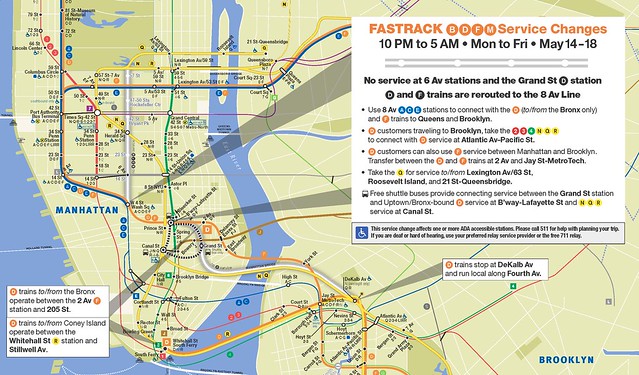The MTA needs its contractors, and the contractors need the MTA. The authority, with its multi-billion-dollar capital plan, is one of the main drivers of the construction industry in New York City and the surrounding region. Without that investment and the drive to expand, workers would see jobs dry up, and contractors would see the flow of funds evaporate. Yet, all is not perfect between these two major players.
Yesterday’s amNew York featured an extensive interview with Denise Richardson, the managing director of the General Contractors Association of New York. Richardson is a former procurement officer for Transit’s capital program and has spent her career in various governmental and agency positions. In light of the current price tags attached to various MTA capital projects, Richardson’s words are quite informative and well worth our attention.
Richardson begins the Q-and-A throwing her voice behind the MTA. When asked what she wants to see changed, she argues for more comprehensive investment in and more attention paid to the MTA. “Everyone complains when there is a problem on their line,” she said, “but the MTA moves 8.5 million people every day and gets almost everyone to their destinations safely and on time. There was almost no capital investment in the system at all from the 1950s to the 1980s. They’ve spend $76 billion since 1982 trying to bring it back to a system of good repair, but some of these projects – like refurbishing the signal system to provide increasing capacity – are very messy and they still haven’t caught up.”
Of course, the GCA is a unique position to lobby for the MTA, and generally, they do so. They were an important voice during the lead-up to the funding of the capital plan, and they have argued for MTA dollars time and again in the past. They support congestion pricing, as Richardson explains in the interview, and they have some weight in Albany as well.
Yet, as the contractors have a symbiotic relationship with the MTA, they also have a slight parasitic one as well. Archaic work rules has led to overstaffing that significantly increases costs. While MTA Capital Construction President Michael Horodniceanu once made an off-hand reference to me on overstaffing, few MTA officials are willing to speak at length about this problem, and Richardson didn’t say too much either. “As a practical matter, the only way we can build large, transformational projects like the World Trade Center or the Hudson Yards is with the skilled, unionized construction workforce,” she said. “[Unions] have had issues adapting to new construction techniques and new construction methods, but they’ve worked hard to address them, so it’s a positive future.”
Ultimately, Richardson’s dream lines up with the impetus behind this blog. As she says, she wants to see “a full-length, Second Avenue subway.” She explained, “The plan is for it to run from Upper Manhattan all the way downtown. I would like to see the funding to continue the project.”
The current leadership at the MTA has yet to come out with plans for Phase 2 north to 125th St., let alone ay sections south of 63rd St. The engineering studies have long been completed, but the dollars aren’t there. A first step in the right direction would involve a concerted effort between the GCA and the MTA to identify ways in which costs can be lowered. Can the MTA and its contractors reduce staffing levels on these projects? Why does everything goes significantly more in New York than in other cities around the globe? These aren’t easy questions, but they need to be answered.
The General Contractors Association could be the MTA’s best friend. They both need each other to move forward, but at some point, moving forward will require compromise and sacrifice. It’s not an easy path.





















